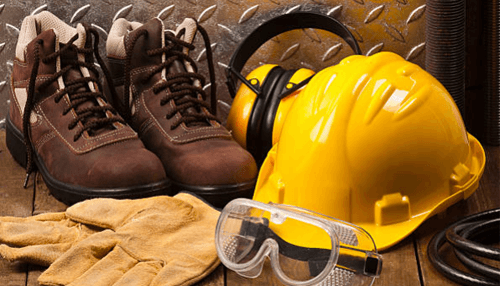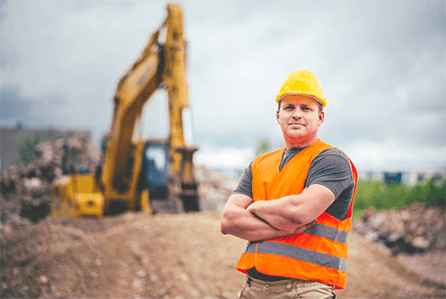There can be lots to like about working on a building site. You could be outside in the fresh air, working alongside good friends and keeping active. Yet these sites also pose a wide range of risks to worker safety, making the use of appropriate safety equipment essential.
Building firms have a legal duty to provide suitable personal protection equipment (PPE) and train employees on how to use it. This is set out in the Personal Protective Equipment at Work Regulations 1992 – and failure to comply could have disastrous consequences.
So what PPE do builders commonly require?
Head protection
Let’s start with perhaps the most obvious equipment – hard hats. Everyone on a site should wear one whether working or not as building projects often carry a permanent risk of falling objects. Using hard hats can also reduce the severity of trip and fall injuries.
They’re usually made of high-density polyethylene (HDPE) or other tough materials, and often feature ventilation for added comfort.
Eyes, face and mouth equipment
The eyes and face are among the most sensitive parts of the body at risk on building sites. As well as falling objects, common risks include hazardous particles and gasses such as sparks, smoke and dangerous chemicals, depending on the nature of the work.
Safety glasses, visors and goggles all offer slightly different levels of protection, while respiratory equipment could be needed in more extreme situations.
Ear protection
Ear protection is vitally important in noisy work environments for eliminating common aftereffects such as ringing and reducing longer-term damage. Both the level and duration of exposure to loud noise should be mitigated against with PPE such as ear defenders and ear plugs.
All those operating heavy-duty machinery on a building site may require this type of protection.
Hand protection
Hands are naturally exposed to risks when carrying out manual work, so precautions should be taken to avoid cuts, abrasions, burns and puncture wounds. Appropriate PPE could range from simple rubber gloves to welding gloves and insulated options, depending on the wearer’s tasks.
Protective footwear
Slips and falls account for a large number of the accidents recorded on building sites, so choosing footwear with sturdy grip and support is vital. Steel toe caps can protect against falling objects, while builders may also require shoes with resistance to wet conditions or other more challenging environments.
Whether you oversee a building site or work in one area, make sure you’re equipped with the right PPE to reduce risks to a minimum.



